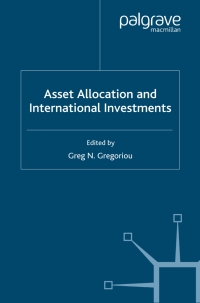Question
What are the main characteristics of Real Options? Do real options always have a nonnegative incremental value (i.e., the value with the real option is

- What are the main characteristics of Real Options? Do real options always have a nonnegative incremental value (i.e., the value with the real option is always at least as high as the value without the real option)? Justify and explain why or why not.
- A MNC is considering expansion. The project entails setting up a factory which will be developed in two phases. The first phase must be initiated now. Depending on the profitability of phase I, the company has the option for expansion in the fourth year.
Phase I
The 1st phase will generate the following income before taxes for 5 years for an investment of $300 m. The companys depreciation and capital investments each year are the same.
| Item/Year | T=0 | T=1 | T=2 | T=3 | T=4 | T=5 |
| Capital Investment | 250 |
|
|
|
|
|
| Working capital | 50 |
|
|
|
|
|
| EBT |
| 50 | 100 | 200 | 200 | 350 |
The cost of capital is 20%. Tax rate is 30%
- What is the NPV of phase I of the project? Should it be accepted?
Phase II
The second phase will start at T=4. The company expects the following income for the second phase:
| Item/Year | T=4 | T=5 | T=6 | T=7 | T=8 | T=9 |
| Capital Investment | 2500 |
|
|
|
|
|
| Working capital | 500 |
|
|
|
|
|
| EBT |
| 350 | 350 | 500 | 600 | 750 |
After year 9, the EBT continues at $750 for the next 6 years (until year 15), at the end of which of the factory will be sold for $2000. The companys depreciation and capital investments each year are the same.
- What is the NPV of Phase II? What is the total NPV of the two phases? Would you take the project by the NPV rule?
Obviously, there is a significant amount of uncertainty about the expected cash flows from the major expansion in Phase II.
The company estimates that the annual standard deviation of expected cash flows is 30%.
- What is the Option value of Phase II? Between NPV and the option value, which is a more appropriate measure of the projects true worth?
- Would you take the project by the Real Option valuation?
- What is the strategic implication of this analysis for evaluation of risky projects?
Step by Step Solution
There are 3 Steps involved in it
Step: 1

Get Instant Access to Expert-Tailored Solutions
See step-by-step solutions with expert insights and AI powered tools for academic success
Step: 2

Step: 3

Ace Your Homework with AI
Get the answers you need in no time with our AI-driven, step-by-step assistance
Get Started


